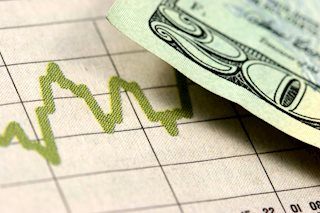US Dollar selling pressure eases, dovish Fed bets steady
|
- Recovering US yields supported the USD on Wednesday.
- The August NFP release is the most important reading for the Fed's policy decision.
- Current market pricing still sees 100 bps of easing by year-end.
The US Dollar, measured by the US Dollar Index (DXY), recovered modestly on Wednesday, after closing lower on Tuesday. The 10-year US Treasury yield held slightly above 3.80%, supporting the Greenback.
With no high-tier economic data releases scheduled for Wednesday, the US Dollar might remain in a narrow range.
Daily digest market movers: DXY recovers on quiet Wednesday
- On a quiet Wednesday, US Treasury yields supported the US Dollar with the 10-year rate above 3.80%
- Market pricing still anticipates 100 bps of easing by year-end, and the odds of a 50 bps cut in September remain at 25-35%.
- Strong August Nonfarm Payrolls figures next week could result in a 25 bps cut, while a weak reading may trigger a 50 bps cut.
- The index might continue sideways trading in the next few sessions, while markets await labor market data — the policy driver at the moment, according to the Fed.
Technical analysis DXY: Bearish momentum eases, index finds support around 101.00
The DXY index is currently hovering around its support levels and near its December lows. Market participants are waiting for new catalysts, resulting in sideways movement in the index over the past few sessions.
The Relative Strength Index (RSI) has moved out of oversold territory, while the Moving Average Convergence Divergence (MACD) indicator’s red bars are signaling a decline in selling pressure. Support levels lie at 100.50, 100.30 and 100.00, while resistance levels are located at 101.00, 101.50 and 101.80.
Fed FAQs
Monetary policy in the US is shaped by the Federal Reserve (Fed). The Fed has two mandates: to achieve price stability and foster full employment. Its primary tool to achieve these goals is by adjusting interest rates. When prices are rising too quickly and inflation is above the Fed’s 2% target, it raises interest rates, increasing borrowing costs throughout the economy. This results in a stronger US Dollar (USD) as it makes the US a more attractive place for international investors to park their money. When inflation falls below 2% or the Unemployment Rate is too high, the Fed may lower interest rates to encourage borrowing, which weighs on the Greenback.
The Federal Reserve (Fed) holds eight policy meetings a year, where the Federal Open Market Committee (FOMC) assesses economic conditions and makes monetary policy decisions. The FOMC is attended by twelve Fed officials – the seven members of the Board of Governors, the president of the Federal Reserve Bank of New York, and four of the remaining eleven regional Reserve Bank presidents, who serve one-year terms on a rotating basis.
In extreme situations, the Federal Reserve may resort to a policy named Quantitative Easing (QE). QE is the process by which the Fed substantially increases the flow of credit in a stuck financial system. It is a non-standard policy measure used during crises or when inflation is extremely low. It was the Fed’s weapon of choice during the Great Financial Crisis in 2008. It involves the Fed printing more Dollars and using them to buy high grade bonds from financial institutions. QE usually weakens the US Dollar.
Quantitative tightening (QT) is the reverse process of QE, whereby the Federal Reserve stops buying bonds from financial institutions and does not reinvest the principal from the bonds it holds maturing, to purchase new bonds. It is usually positive for the value of the US Dollar.
Information on these pages contains forward-looking statements that involve risks and uncertainties. Markets and instruments profiled on this page are for informational purposes only and should not in any way come across as a recommendation to buy or sell in these assets. You should do your own thorough research before making any investment decisions. FXStreet does not in any way guarantee that this information is free from mistakes, errors, or material misstatements. It also does not guarantee that this information is of a timely nature. Investing in Open Markets involves a great deal of risk, including the loss of all or a portion of your investment, as well as emotional distress. All risks, losses and costs associated with investing, including total loss of principal, are your responsibility. The views and opinions expressed in this article are those of the authors and do not necessarily reflect the official policy or position of FXStreet nor its advertisers.